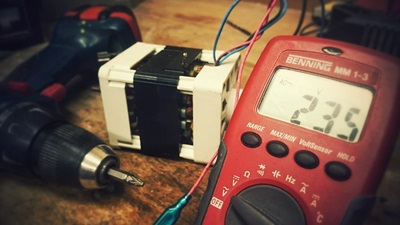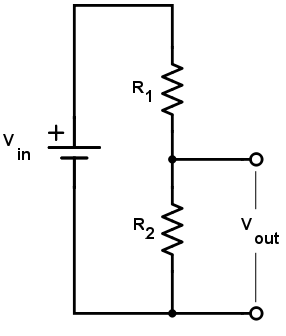
Voltage during DC earth fault in a system
In 220 V DC system when there is NO earth fault in the system, Ideally
+Ve to Earth Voltage should be +110 V
-Ve to Earth Voltage should be -110 V
Similarly in 110v DC system ,+Ve to E= +55 V and –Ve to E=-55V.
In case there is earth fault in DC system , we will not get above balanced voltages, if there is absolute +Ve to ground fault then we will get following voltages:
+Ve to E=0 V, -Ve to E=220 V
Similarly if there is absolute -Ve to ground fault then we will get following voltages:
-Ve to E=0 V, +Ve to E=220 V
But not often there is absolute DC earth fault in the system, there could be leakage of voltage due to various reasons like poor insulation ,faulty equipment etc . In this case we may see following voltage readings:
+Ve to E=25 V, -Ve to E=195 V
Where the DC voltage is divided?
The circuit using two resistors R1 and R2 which are usually in Kilo-ohms are used to divide the DC voltage in equal half in DCDB Panel.

(DCDB panel)
After measurement of DC voltages using multimeter if it is found that +Ve to E or -Ve to E values are not almost balanced/equal or if either of them is absolute Zero , then it is sure that Earth fault persists somewhere in the system, it may be present in Load side (Panel side) or somewhere in battery bank ,chargers or DCDB panel itself .

Troubleshooting DC E/F can be very exhausting if we don’t have earth fault locator , as DC supply is present everywhere in the system-Circuit breakers, indication lamps, Relays, DC lighting , SST incomer Panels etc.
Steps of Troubleshooting
- From DCDB panel, switch off DC MCBs one by one and keep checking if there is any improvement in DC voltage , if after turning off any particular MCB ,the voltage becomes balanced it implies that fault exist in the circuit ahead of that MCB. We then need to find out where power is being supplied from this MCB. Shutdown of respective panel/bays should be taken before turning off its DC supply from DCDB as all protection system runs on DC supply.
- From DCDB ,power is supplied to Control and relay panels and from the control and relay panels it is supplied in circuit breakers, Isolators, relays etc. In control panel, separate DC MCBs are used for relays, circuit breakers, alarms and indication circuit etc.
- We trace the fault further in the panel by turning off the MCBs one by one and then need to observe after turning of which MCB ,the voltage is stabilizing , we go through panel drawing to understand DC distribution in the Panel and then locate exact location of fault.
- There may be a case where even after turning-off all the MCBs in the DCDB ,the voltage doesn’t stabilize, it means there is no fault in the load side, the fault may be present in the incoming cables from battery chargers or the fault may be present in the wires which connect the Dc E/F relay or voltmeter in the DCDB panel .
- DC bus in DCDB panel and other wires in the DCDB panel may also get grounded ,this is also checked if the fault is not found anywhere else in the system.
- In DC battery bank , a particular battery or some batteries may get damaged and get earthed and may cause DC earth fault in the system.
By following all above mentioned steps, we can locate and rectify the DC earth fault in our system.
You may also watch this video for troubleshooting DC earth fault :
Frequently Asked Questions (FAQ) on DC Earth Faults:
- What is a DC earth fault?
- A DC earth fault is a situation where an unintended electrical connection between a direct current (DC) circuit and the Earth or ground occurs, creating an electrical path that can potentially disrupt the normal operation of the system and pose safety risks.
- What causes this earth faults?
- DC earth faults can be caused by various factors, including insulation breakdown, damaged cables, equipment malfunctions, improper installation, or corrosion in the electrical system.
- Why are these earth faults a concern?
- DC earth faults can lead to several issues, including equipment damage, electrical fires, safety hazards, and operational disruptions in systems such as solar power plants, battery systems, and DC-powered installations.
- How can I detect a DC earth fault?
- DC earth faults can be detected using various methods, including ground fault detection systems, insulation resistance tests, and visual inspections. These methods help identify abnormal currents or voltage imbalances.
- What is a ground fault detection system?
- A ground fault detection system is designed to monitor the DC circuit and quickly identify any unintended electrical connections to ground. When a fault is detected, the system triggers alarms or disconnects the circuit to prevent further issues.
- How can I prevent DC earth faults?
- To prevent DC earth faults, you can follow these steps:
- Use high-quality insulation materials.
- Regularly inspect and maintain the electrical system.
- Install ground fault detection systems.
- Ensure proper grounding and earthing of the DC system.
- To prevent DC earth faults, you can follow these steps:
- Are DC earth faults common in specific applications?
- DC earth faults are more common in applications that rely on direct current, such as photovoltaic (solar) power systems, battery storage systems, electric vehicles, and some industrial processes.
- What are the risks associated with DC earth faults?
- The risks associated with DC earth faults include electrical shock hazards, equipment damage, fire hazards, and potential system downtime. Timely detection and mitigation are crucial to minimize these risks.
- How can DC earth faults be repaired?
- Repairs for DC earth faults typically involve locating the faulted component or section of the system and either replacing or repairing it. It may also involve re-establishing proper insulation and grounding.
- What standards and regulations address DC earth faults?
- Standards and regulations for electrical safety and grounding practices can vary by region, but organizations such as the National Electrical Code (NEC) in the United States and the International Electrotechnical Commission (IEC) provide guidelines and requirements for addressing DC earth faults.
- Can DC earth faults be dangerous in high-voltage DC (HVDC) systems?
- Yes, DC earth faults in high-voltage DC (HVDC) systems can be extremely dangerous due to the high voltages involved. Specialized protection and detection systems are used in HVDC systems to mitigate these risks.
- How can I ensure the safety of personnel when dealing with DC earth faults?
- To ensure personnel safety when dealing with DC earth faults, follow appropriate safety procedures, use personal protective equipment, and de-energize the system before performing any maintenance or repairs. Trained professionals should handle these tasks.